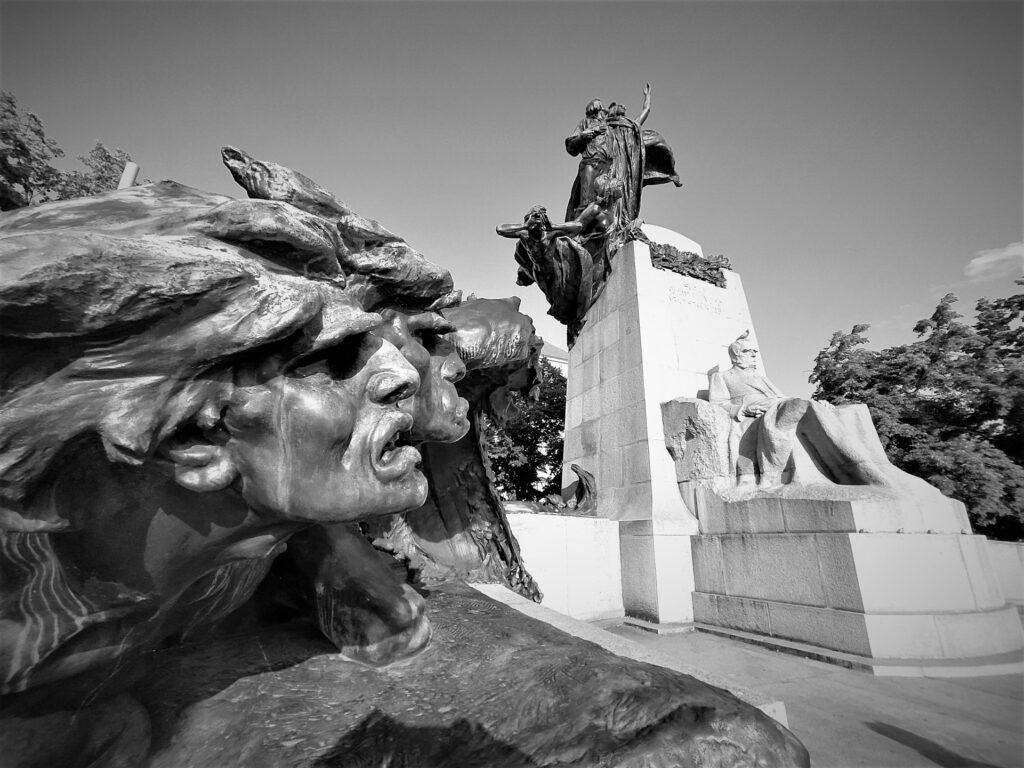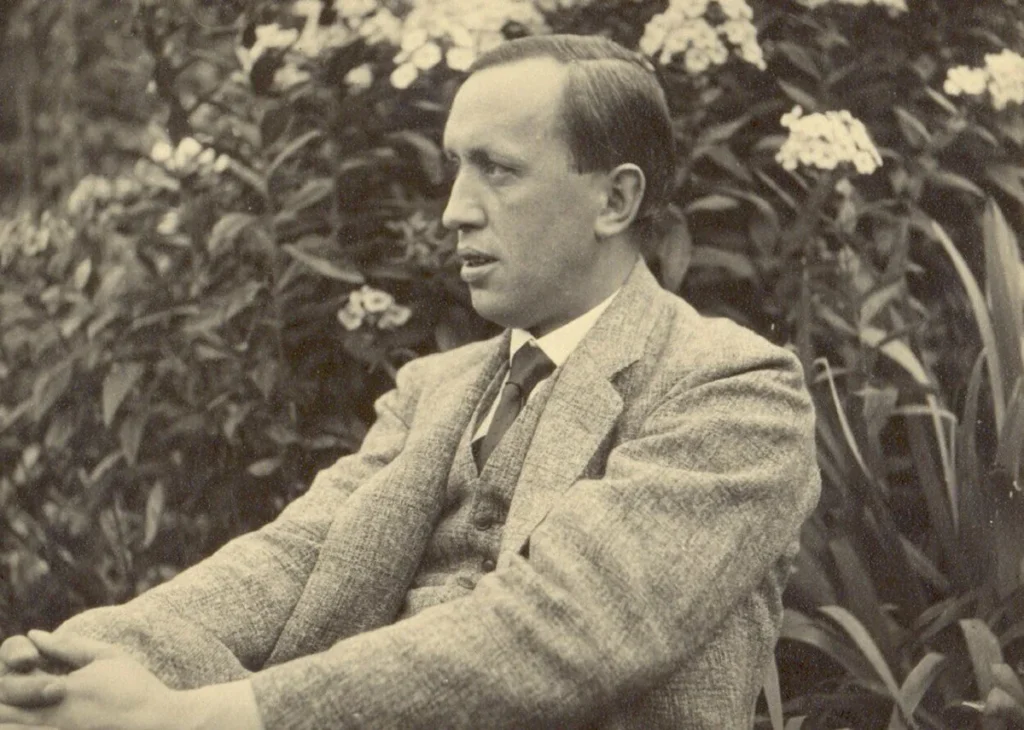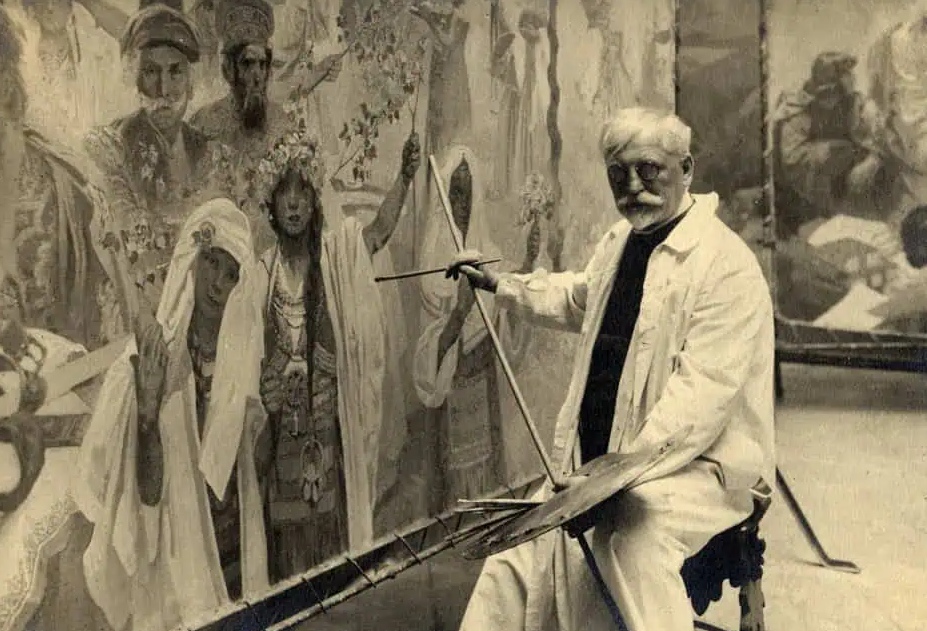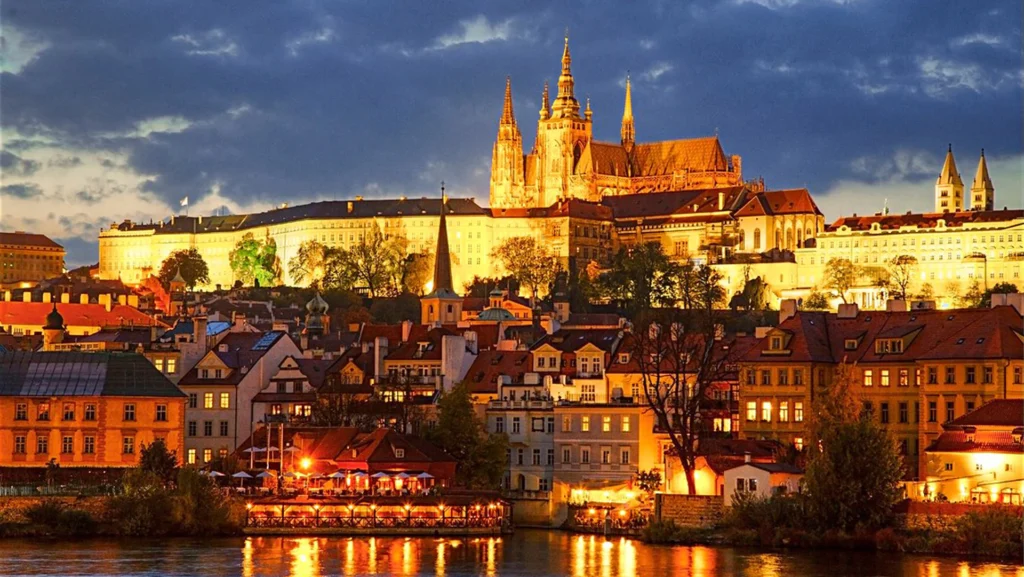Czech culture is a true world concept in its importance and with complete seriousness. According to certain standards, where a cultural programme of the best of the national cultural wealth is drawn up for the whole year, this means filling the theatre with authors of Czech and Slovak plays, composers, actors, opera singers, ballet and philharmonic orchestras. But it refers to the contribution in literature, fine arts, fine photography, film, sculpture and also fashion design, our design also has an impact on the development of individual styles around the world, architecture, craftsmanship, law, folklore, customs, traditions, holidays, rituals, local gastronomy and its regional diversity. Simply everything that culture contains. So we are after Italy, France, Russia, England, China, Germany and Spain. We are between eighth and tenth of all cultural powers in the world. Let us therefore recall who and what the Czech and Slovak people have given to the world.
Language is the basis of cultural identity
A nation cannot be called a nation unless it has a national language, which is the basis of cultural development. The basis of our language is from Greek and Latin, plus a certain part from German and then but a large content is from the Old Slavic language. Then some expressions are added from French and, at present, especially from the English language. But I've taken that very much in a nutshell. I can't fail to mention the similarity between Czech and Slovak. The mutual intelligibility of the two languages is estimated at 95 %. Their dialects form a linguistic continuum, i.e. the transition between them is smooth. In the interwar Czechoslovakia (1918-1938), in the spirit of the policy of the time, Czech and Slovak were considered as two written variants of one language.
Literature
The beginnings of Czech literature are related to the activities of Constantine the Philosopher and his brother Methodius in Great Moravia. Together with their pupils, they created the first Czech literary monuments in Old Slavonic (Proglas, Life of Methodius, Life of Constantine). After the expulsion of this group from Moravia, Latin began to play a key role, and legends (the legend of Kristián) and chronicles (especially the chronicle of Kosmas) were written in it. The first important Czech texts were the Alexandreida and the Chronicle of Dalimilus. The first authors who also wrote in Czech and who achieved world fame were Jan Hus, one of the founders of the European Reformation, and Jan Amos Komenský, the most important representative of humanism in Czech literature.
It was not only under the consequences of the Battle of White Mountain that the decline of the Czech language was halted during the national revival that began at the end of the 18th century. A key figure in the first stage of the revival was the linguist Josef Dobrovský. In the second stage it was Josef Jungmann who emphasized the linguistic conception of the nation. It was also then that the first distinctive literature began to appear (Jan Kollár, František Ladislav Čelakovský).

The process culminated in the third stage, when František Palacký and Karel Havlíček Borovský completed the concept of the Czech nation politically, and when the culminating literary works, whether poetic (Havlíček, Karel Hynek Mácha, Karel Jaromír Erben), prose (Božena Němcová) or theatrical (Josef Kajetán Tyl, Karel Sabina), were created, which the older generations are certainly familiar with. In the second half of the 19th century, literary life began to develop rapidly, and groups with different agendas emerged - the Mayans (Jan Neruda, Vítězslav Hálek, Jakub Arbes), the Rustics (Svatopluk Čech), the Lumirs (Jaroslav Vrchlický, Julius Zeyer), the Realists (Alois Jirásek), Czech Modernism (Antonín Sova, Otokar Březina)
In the first half of the 20th century, Czech writers, especially Jaroslav Hašek and Karel Čapek, also gained worldwide importance. The left-wing avant-garde was also strong, uniting in the Devětsil association, which first devoted itself to proletarian poetry, then invented the direction of poetism, and most authors eventually switched to surrealism. Jaroslav Seifert was a member of Devětsil, the only Czech to be awarded the Nobel Prize for Literature (in 1984). Other important members included Jiří Wolker, Vítězslav Nezval, Vladislav Vančura, František Halas and Karel Teige.

Karel Čapek
Theatre
Czech theatre has its roots in the Middle Ages. The oldest surviving dramatic work using the Czech language is a fragment of a 14th-century Bohemian-Latin play, usually called Mastičkář. It was originally a kind of interlude in a production of Gospel scenes - it describes a situation when Jesus' mother Mary goes to the market to buy scented ointment to embalm Jesus' dead body. The scene, however, became increasingly independent and satirically described the conditions in the bourgeois milieu.
In the 19th century, the theatre played a significant role in the national revival (Václav Kliment Klicpera, Josef Kajetán Tyl). The emancipatory efforts of the Czech nation were manifested in the second half of the 19th century with the opening of the National Theatre in Prague in 1883.
The first half of the 20th century saw the development of avant-garde theatre represented by the Liberated Theatre of Jiří Voskovec and Jan Werich, or by Emil František Burian, Jiří Frejka, Jindřich Honzl and Jiří Mahen. The most successful plays on the world stage were those by Karel Čapek (R.U.R., The Makropulos Thing) or František Langer (Periphery).
The second half of the 20th century saw the development of small-format theatres such as Semafor (Jiří Suchý and Jiří Šlitr), the Na zábradlí Theatre (Jan Grossman, Ivan Vyskočil), and the Drama Club (Ladislav Smoček). Husa na provázku, Ypsilonka (Jan Schmid), Divadlo Sklep and the theatre of Jára Cimrman (Zdeněk Svěrák, Ladislav Smoljak).
Czechoslovak film
Czech cinema achieved international acclaim especially in the 1960s, when the so-called Czechoslovak New Wave was discussed (Miloš Forman, Věra Chytilová, Jiří Menzel, Ján Kadár, Elmar Klos, Jaromil Jireš, František Vláčil, Vojtěch Jasný, Juraj Jakubisko, Juraj Herz, Ivan Passer, Jan Němec). More serious artistic ambitions were fulfilled at the same time by Karel Kachyň, Otakar Vávra, Jiří Krejčík and Karel Zeman.
The 1930s to 1950s and later the 1970s to 1980s, however, were more conducive to popular film than to artistic filmmaking, and directors such as Bořivoj Zeman, Oldřich Lipský, Václav Vorlíček, Martin Frič and Ladislav Smoljak, screenwriters Jiří Brdečka, Miloš Macourek, Zdeněk Svěrák and film music composers Zdeněk Liška, Luboš Fišer and Petr Hapka used this space with timeless elegance.
The Shop on the Corniche (1965), Closely Watched Trains (1967) and Kolya (1996) won the Academy Award for Best Non-English Language Film, while six other films were shortlisted for the Best Foreign Language Film Oscar. The Czech puppet and animated film (Jiří Trnka, Hermína Týrlová, Zdeněk Miler, Jan Švankmajer, Břetislav Pojar) achieved international fame. This tradition also includes the television series Večerníček, on which leading artists such as Adolf Born, Zdeněk Smetana and Vladimír Jiránek collaborated.
Music so-almost heavenly
Czech music has its roots in at least 1000 years of sacred music. The oldest sacred song in the Czech lands was Old Slavonic: Lord, have mercy on us. It originated at the end of the 10th century or the beginning of the 11th century. Its origins are clearly Old Slavonic, but elements of Old Czech also penetrated into it. The first sacred song in Old Czech, Svatý Václav, vévodo české země (also Svatováclavský chorál), was composed in the 12th century.
Also the singer Ema Destinnová, and the Czech Philharmonic Orchestra. Shortly after the Second World War, the important music festival of classical music Prague Spring was also founded. The Czechs also took up new genres in the 20th century. In jazz Jaroslav Ježek, in operetta Oskar Nedbal, in popular music Jan Hammer or Karel Svoboda, in folk music Karel Kryl or Jaromír Nohavica. In response to popular Austrian brass music (especially military music), a specific Czech version of it developed, especially thanks to František Kmoch. In the world, the most famous Czech melodies are still the brass ones.
Fine art world top
Original painting came on the scene in the Baroque period. Among the most important Czech Baroque painters were Karel Škréta, Jan Kupecký and Petr Brandl. Václav Hollar, famous for his engravings, had a special position. The top sculptural works of that era were created by Matyáš Bernard Braun and Ferdinand Maxmilián Brokoff.
In the first half of the 19th century, the Czech national revival was underway, but the revivalists did not place as much emphasis on painting as they did on literature, theatre or science. Painting remained a craft, with Josef Matěj Navrátil excelling in landscape painting and Karel Purkyně in portraiture and still life. The turning point came in the mid-19th century, when the wave of Romanticism and Realism arrived in the Czech lands. The most important representative of Romanticism was Josef Mánes, today known mainly for his decoration of the Prague astronomical clock. Jaroslav Čermák, for example, chose realistic painting.
With the 1970s and 1980s came the so-called National Theatre Generation, i.e. artists who had somehow participated in the decoration of the Golden Chapel, which was currently under construction: among them, Mikoláš Alš received the greatest international acclaim. Other members of the generation included Vojtěch Hynais, Julius Mařák, Václav Brožík, Jakub Schikaneder, František Ženíšek and Josef Tulka. The sculptor Josef Václav Myslbek was also a member of this generation.
Most of the artists of the National Theatre Generation continued to oscillate between romantic and realistic painting, especially landscapes. However, this was soon not enough for some artists. The landscape painter Antonín Chittussi began to change the technique of landscape painting to the point of being on the verge of impressionism. Antonín Slavíček became the top representative of this movement. The work of Luděk Marold is sometimes described as a precursor of Art Nouveau painting.

Alfons Mucha
Art Nouveau was one of the key movements that emerged at the end of the 19th century. It played an extraordinary role in the Czech environment. Its main representative, Alfons Mucha, is today the most famous Czech painter in the world. Apart from his famous posters, Mucha also became famous for his cycle of 20 large-format paintings, the Slavic Epic, which summarises the history of the Czech nation and the Slavs. It is exhibited in the Trade Fair Palace in Prague, formerly in Moravské Krumlov. The Art Nouveau style also includes the work of Max Švabinský and Jan Preisler. František Bílek, Jan Štursa and Ladislav Šaloun also belong to it.
Art Nouveau was provocative in its tendency towards utilitarianism, but otherwise revered classical and academic techniques. At the end of the century, however, new movements began to rebel against them. Above all, Expressionism. Bohumil Kubišta, Emil Filla and Otakar Kubín belonged to the Czech Expressionist group Osma. Members of Osma then moved on to Cubism, another new avant-garde movement.
It was the avant-garde that began to set the course in the first half of the 20th century. From cubism to pure abstract painting came František Kupka. The fledgling cubism seeking new forms of expression was cultivated in the Tvrdošíjní group (especially Josef Čapek, Jan Zrzavý and sculptor Otto Gutfreund). Members of the avant-garde Devětsil then became enthusiastic about surrealism (Toyen, Jindřich Štyrský, Josef Šíma).
In spite of the avant-garde, Josef Lada went his own way - and he is one of the most famous Czech painters in the world today.
In the second half of the 20th century, artists mostly developed the discoveries of the avant-garde revolution - in abstract art, for example, it was Vladimír Vašíček; Oldřich Lajsek, Mikuláš Medek, Vladimír Boudník, etc. The surrealist playfulness, especially in his well-known collages, was continued by Jiří Kolář, who worked in exile, and Jan Švankmajer, who worked at home. Kája Saudek touched upon a completely new direction called pop-art. At the end of the 1980s, members of the group Tvrdohlaví (Jiří David, Petr Nikl, Jaroslav Róna) appeared.
Czecho-Czechoslovak Photography
The most famous representatives of Czech artistic photography are František Drtikol, Josef Sudek, Jan Saudek and Josef Koudelka.
Book illustration, caricature and cartooning play an important role in Czech art. František Gellner was a master of caricature, while Viktor Oliva, Josef Lada, Jiří Trnka, Zdeněk Burian, Adolf Born and Květa Pacovská, who won the Hans Christian Andersen Prize from the International Children's Book Association in 1992 for her book illustrations, have excelled in book illustration. Zdeněk Smetana and Zdeněk Miler have made their mark in cartoons.
Architecture
Our architecture has influenced perhaps all world styles and periods and is unique in Cubism worldwide. Prague itself, despite its neat chamber size, is interwoven with world styles. We can find here the equivalent of the Eiffel Tower, the Statue of Liberty on the roof of the Czech National Bank, etc. Gothic architecture in the Czech lands reached its peak under Charles IV. He had the Charles Bridge built in the Gothic style in Prague, and the magnificent construction of St. Vitus Cathedral began, with the help of the architect Petr Parléř and his son Jan Parléř. As a repository for the new crown jewels that Charles had created, he had Karlštejn Castle, whose architect was Matthias of Arras, built in central Bohemia.
However, Gothic reached its greatest peak and prosperity in the Jagiellonian era (also known as Vladislav or Jagiellonian Gothic). Vladislav Jagiellon began the magnificent reconstruction of Prague Castle and called from Saxony the builder Benedikt Rejt, who in Bohemia, among other things, created the Vladislav Hall and the Church of St. Barbara in Kutná Hora, which was built by another famous builder Matěj Rejsek, the author of Prague's Powder Tower. Antonín Pilgram left his mark on late Gothic architecture in Brno at that time. (see also Gothic architecture in the Czech Republic)
Also in the Baroque era, important architects such as Carlo Lurago (Clementinum), Francesco Caratti (Czernin Palace), Jan Baptista Mathey (Archbishop's Palace, Tuscan Palace, Troja Summer Palace) worked in the Czech lands, Jan Blažej Santini-Aichel (Church of the Green Mountain), František Maxmilián Kaňka (Charles Crown), Kryštof Dientzenhofer (Church of St. (see also Baroque architecture in the Czech Republic)

The wave of Art Nouveau at the turn of the 19th and 20th centuries was significant in Czech architecture (esp. Municipal House in Prague, from the architects Antonín Balšánek, Osvald Polívka, Josef Fanta, Jan Letzel), and just before the war - cubism, which was a Czech specialty (Josef Gočár's house U Černé Matky Boží, Josef Chochol's Kovařovic villa).
From the 1920s onwards, architecture gravitated towards functionalism (Veletržní palác in Prague, the Bata skyscraper in Zlín, Villa Tugendhat in Brno), whose representatives included Jan Kotěra and Josef Gočár. Josip Plečnik, a prominent Slovenian architect, also worked in Prague at that time (most notably the Church of the Sacred Heart of the Lord on Jiřího z Poděbrad Square in Prague). Pavel Janák also attempted to create a "national style", a combination of folk and modern architecture (e.g. the crematorium in Pardubice and the Adria Palace in Prague). Dušan Jurkovič followed a similar path.
From the architecture of the second half of the 20th century, the Czech version of Brutalism is increasingly appreciated, especially from the work of Vera Machonina and her husband Vladimir Machonin (the House of Housing Culture in Prague, the Thermal Hotel in Karlovy Vary, the Kotva department store in Prague, the Czechoslovak Embassy in Berlin). Other Brutalist buildings include the Czechoslovak Embassy in London by architects Jan Bočan, Jan Šrámek and Karel Štěpánský, the Intercontinental Hotel in Prague by Karel Bubeníček and Karel Filsak, and buildings by Karel Prager (the former Federal Assembly building, the New Stage of the National Theatre). However, the most appreciated building of this period was the transmitter on Ještěd by Karel Hubáček.
Frank Gehry and Vlado Milunić's Dancing House in Prague, which was initiated directly by Václav Havel and which is often cited as a symbol of postmodern architecture, played a significant role in post-Soviet architecture. Jean Nouvel (the Golden Angel in Prague's Smichov district) was one of the world's most important architects working in Prague at that time, but it eventually became clear, after the post-revolutionary enthusiasm had waned, that it would be difficult to attract big architectural names to the Czech Republic. Among the projects of domestic architects, the project of the National Technical Library in Dejvice, Prague, received the most credit. The much-discussed project of the new building of the Jan Kaplický National Library remained only on paper.
Other prominent architects of Czech origin were Adolf Loos, Josef Hoffmann, Joseph Maria Olbrich and Balthasar Neumann. They contributed to the development of Vienna in particular, as did the Czech builder Josef Hlávka.
Jan Vojtěch / gnews.cz



